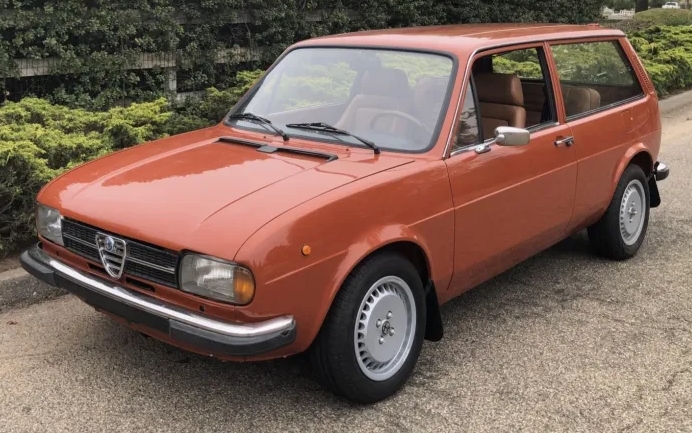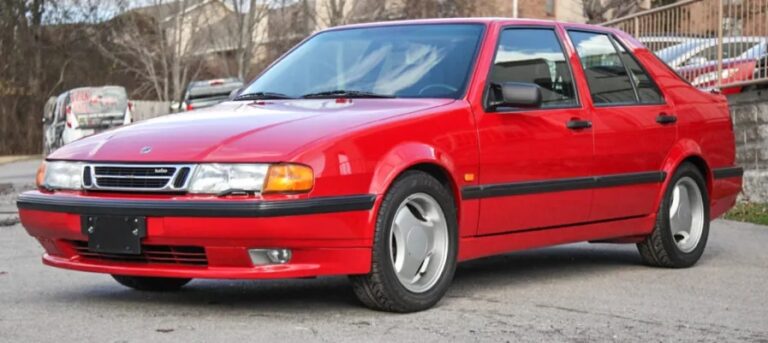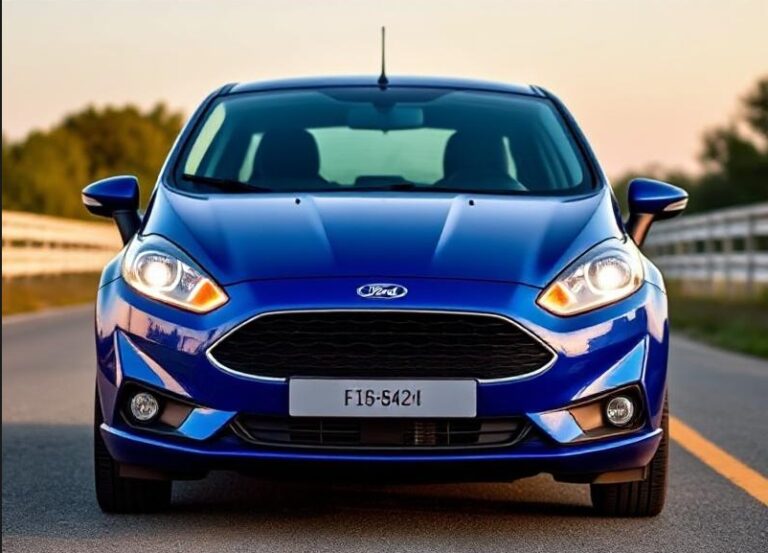The Alfa Romeo Alfasud: A Revolution in a Rust Bucket
The Alfa Romeo Alfasud. The name alone conjures a spectrum of emotions for automotive enthusiasts. For some, it’s a symbol of pure driving pleasure, a lightweight, nimble machine that danced on its tiptoes. For others, it’s a wistful memory, a testament to Italian engineering brilliance marred by a notorious Achilles’ heel: rust. Yet, regardless of one’s personal perspective, the Alfasud was an undeniable revolution for Alfa Romeo, a car that dared to break from tradition and, in doing so, secured the company’s future for a critical period. This is the story of its evolution, its triumphs, and its enduring legacy.
The Genesis of a Necessity: 1972-1973
The mid-1960s saw Alfa Romeo in a precarious position. While their larger, rear-wheel-drive saloons like the Giulia and Alfetta were lauded for their driving dynamics and sporting pedigree, they were increasingly expensive to produce and appeal to a shrinking market. The company desperately needed a smaller, more affordable car to compete with the burgeoning segment dominated by cars like the Volkswagen Golf and the Fiat 128. The answer, conceived by Rudolf Hruska and his team at the newly established “Industria Napoletana Automobili” (INA) in Pomigliano d’Arco, near Naples, was the Alfasud – literally meaning “Alfa of the South.”
The Alfasud was a radical departure for Alfa Romeo on several fronts. Firstly, it adopted front-wheel drive, a configuration previously absent from their passenger car lineup. This allowed for a more compact and spacious interior, a crucial consideration for a smaller car. Secondly, it employed a revolutionary Boxer engine. This flat-four configuration, with its low center of gravity, was a masterstroke in automotive design, contributing significantly to the Alfasud’s exceptional handling. The initial engine offered was a modest 1.2-liter unit, producing around 63 horsepower.
Launched in 1972, the original Alfasud was presented as a stylish, four-door saloon. Its design, penned by Giorgetto Giugiaro of Italdesign, was remarkably modern and elegant for its time, featuring sharp lines and a distinctive front grille that hinted at its sporting lineage. The emphasis was on a lightweight construction and a sophisticated all-independent suspension system, a testament to Alfa Romeo’s engineering prowess.
The initial launch was crucial, and Alfa Romeo introduced the Alfasud in a single, well-appointed trim level. This early model, simply known as the Alfasud, set the template for what was to come. Its focus was on driver engagement, with precise steering and a supple ride that belied its affordable price point.
.

.
The Sporting Edge Emerges: 1973-1977
Recognizing the inherent sporting potential of the Alfasud’s chassis and engine layout, Alfa Romeo quickly introduced a two-door variant in 1973. This Alfasud Sprint was a more coupe-like offering, emphasizing style and sportiness. It retained the 1.2-liter engine but offered a more aggressive visual appeal, including different badging and styling cues.
The same year also saw the introduction of a more powerful engine option for the four-door saloon: a 1.3-liter unit, offering a modest increase in power. This marked the beginning of a gradual expansion of the Alfasud range, catering to a wider spectrum of customer desires.
By 1974, the Alfasud was becoming a recognizable fixture on European roads. Alfa Romeo introduced a more potent engine, a 1.45-liter unit, which found its way into various trim levels, signaling a clear intent to push the performance envelope. This period also saw the introduction of more distinct trim levels, allowing customers to choose based on their priorities.
The Alfasud Lusso (Luxury) emerged, offering more creature comforts and a slightly more refined interior. Alongside this, the Alfasud TI (Turismo Internazionale) became the performance benchmark. The TI models were distinguished by sportier aesthetics, including alloy wheels, stripes, and a more aggressive interior. Crucially, the TI models received tuned versions of the larger engines, pushing horsepower figures closer to the 90-95 hp mark, making them genuinely quick for their class.
The Alfasud Super was also introduced, offering a blend of the Lusso’s comfort with the TI’s performance, often featuring the larger engines and a well-equipped interior.
The Alfasud’s reputation for handling was cemented during this period. Its low weight, front-wheel drive layout, and sophisticated suspension made it a joy to drive on twisting roads. However, whispered concerns about its susceptibility to rust began to surface. The use of less-than-ideal steel and inadequate rustproofing, especially in the early years, meant that Alfasuds were prone to corrosion, a problem that would unfortunately define the model for many.
An Evolving Design and Expanding Horizons: 1978-1983
The Alfasud underwent its most significant visual and mechanical update in 1978. This facelift, designed to keep the car competitive, brought a more modern appearance. The headlights were enlarged, the grille was revised, and the bumpers were redesigned to incorporate plastic elements, a nod to contemporary automotive trends. The interior also received a refresh, with a more integrated dashboard and improved ergonomics.
This facelift coincided with a further expansion of the engine range and trim levels. The 1.2-liter engine remained as an entry-point, but larger displacement engines became more prominent. A 1.5-liter engine, offering around 95 hp, became a popular choice, powering models like the Alfasud Gold Cloverleaf. “Cloverleaf” (Quadrifoglio Verde in Italian) denoted Alfa Romeo’s performance models, and the Gold Cloverleaf Alfasud was a desirable, sporty variant.
The Alfasud Sprint also benefited from these updates. The two-door coupe received a revised body kit and often featured the more potent engines. The Alfasud Sprint Veloce emerged as the top-tier performance version of the coupe, boasting increased power and sportier handling characteristics.
Further models included the Alfasud S (Special), which often featured a slightly improved engine and a more upmarket interior compared to the base models. The Alfasud SL offered a balance of sportiness and comfort, often featuring a more refined interior.
The rust issue, while still present, became a more widely acknowledged problem. Despite Alfa Romeo’s efforts to improve rustproofing in later production runs, the damage to its reputation was already done. For many owners, the pleasure of driving an Alfasud was often tinged with the anxiety of its impending decay.
The Twilight Years and Legacy: 1983-1989
As the 1980s progressed, the Alfasud was showing its age, both in terms of design and engineering. The automotive landscape had evolved, with competitors offering more refined and durable vehicles. However, Alfa Romeo continued to refine the Alfasud, launching its final iteration in 1983: the Alfa Romeo 33.
The 33 was essentially a thoroughly revised Alfasud, with a new body shell that offered a more contemporary look. While it retained the fundamental Alfasud platform and its signature Boxer engines, it represented an attempt to modernize the concept. The 33 continued the lineage of sporty variants, with models like the 33 QV (Quadrifoglio Verde) carrying the performance torch.
The Alfasud itself ceased production in 1989, marking the end of an era. The final Alfasuds produced were largely based on the earlier designs, but still offered with the characteristic Boxer engines. The focus remained on offering a sporty and engaging driving experience, even as the car’s core design stretched back almost two decades.
Beyond the Rust: An Enduring Appeal
Despite its well-documented vulnerability to rust, the Alfa Romeo Alfasud carved out a unique and important space in automotive history. It was a car that dared to be different, a front-wheel-drive Alfa Romeo that delivered on the promise of dynamic driving. Its Boxer engine was a marvel of engineering, contributing to a low center of gravity and exceptional handling that few of its contemporaries could match.
The evolution of the Alfasud saw it grow from a simple, stylish saloon into a range of sporty and desirable cars. The introduction of the Sprint coupe, the performance-oriented TI and Cloverleaf models, and the later refinement in the 33 all showcased Alfa Romeo’s commitment to its sporting heritage, even in a more affordable segment.
Today, well-maintained Alfasuds are highly sought after by collectors and enthusiasts. They represent a unique blend of Italian flair, engineering innovation, and pure driving pleasure. The rust may have been its undoing in the eyes of many, but the soul of the Alfasud – its agility, its responsiveness, and its irrepressible character – continues to captivate those who appreciate a car built for the joy of driving. It was a revolution that, despite its flaws, left an indelible mark on the automotive world.







